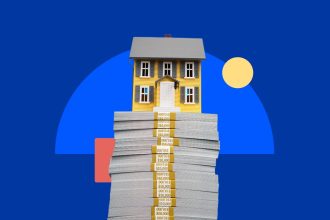Key takeaways
- Personal loans give you a predictable payment and can be funded quickly.
- They can help your credit score if used instead of credit cards.
- May keep you from depleting savings accounts or altering long-term savings goals.
- Average personal loan rates are more than 7 percentage points lower than average credit card rates.
Although Bankrate editor Katie Lowery used credit cards and some savings for back-to-school expenses, she may need to take out a personal loan to purchase a big-ticket band instrument for her son.
“I didn’t consider a personal loan this year because many of the costs are ongoing, and the total didn’t justify a lump-sum loan,” she said. “But if I have to buy my son’s full-size marimba ($6,000), a low-interest personal loan with a short repayment term will be my first financing choice.”
Back-to-school time can put a dent in the budgets of families already struggling with record-high credit card debt, leaving very little (if any) funds on hand for emergencies. Opting for a personal loan may help ease the back-to-school-budget pain better by spreading out payments.
A personal loan may help you manage your budget before the first day of school arrives. Because you receive the funds all at once, you’ll need to fine-tune the dollar amount ahead of time, but it will help you avoid the swipe-and-go-forget-about-it credit card alternative that comes with more interest charges and the ding to your credit score.
It could also spark a money conversation with your kids, if you can handle the inevitable rolling of the eyes.
Estimation of back-to-school costs
Every year, the National Retail Federation puts out a report about how much consumers are budgeting per child for back-to-school (BTS) expenses. Here’s how the averages roll out for 2025:
| Type of expense | Per child expense (K-12) |
|---|---|
| Electronics | $295.81 |
| Clothing and accessories | $249.36 |
| Shoes | $169.13 |
| School supplies | $143.77 |
| Total per child 2025 BTS expense | $858.07 |
For the average two-child family, you’ll spend about $1,700 on back-to-school shopping, but as many parents know, back-to-school can also mean going back to sports, dance recitals or any other interests your kids might have.
These extracurricular activities would mean you need to budget extra money:
Bottom line: If you have two kids, your back-to-school kick-off bill could quickly top $3,000. How can personal loans help?
4 ways personal loans can help you during the back-to-school season
1. Make a budget – and stick to it
The best way to avoid the emotional pull of an impulse purchase during the school shopping season is to have all of your funds allocated ahead of time. With a personal loan, you receive all your funds in one lump sum. You don’t get to reuse the credit as it’s paid down because it’s an installment loan. You’re probably not going to be motivated to spend more because there’s no card to swipe with an installment loan.
Deloitte’s back-to-school spending survey found that nearly two-thirds of parents say their kids often influence them to spend more, but Bankrate senior industry analyst Ted Rossman says this can be the perfect time to teach age-appropriate financial lessons to your kids, “maybe as little as preschool, but certainly by elementary, and definitely middle and high school.”
Rossman says that could help approach spending decisions differently. For instance, if you want to set a back-to-school budget at $200, but your kids also want fancy backpacks or shoes, let them know the purchase is possible only if you “trim back somewhere else.”
2. Avoid the credit card merry-go-round
The best way to stay off the credit card spinning ride is to use a personal loan. With average personal loan rates more than seven percentage points lower than credit card interest rates, your monthly payment might not be that much higher than what you’re paying on your credit cards.
According to a recent Bankrate credit utilization survey, 45 percent of cardholders maxing out their credit cards are parents with children younger than 18. To make matters worse, 46 percent of Americans with under-aged kids missed at least one payment due to rocky financial times.
Credit score
You won’t damage the credit utilization ratio portion of your credit score by getting personal loans because they are installment products.
3. Consolidate the credit cards you used for back-to-school bills.
If you already cranked up your cards, take heart: you can consolidate them with a personal loan. In fact, debt consolidation is one of the most common reasons to take out a personal loan. If you take one out and use the funds to pay those balances in full soon after your back-to-school credit charging extravaganza, you might minimize the damage to your credit score.
Your scores may improve enough that you can shop for a lower personal loan rate in the future, or you may find other money-saving opportunities, such as a lower home or auto insurance premium, or refinancing high-interest student loans you took out when your credit scores were in the dumps.
4. Stop the high-frequency buy now, pay later bill-paying insanity
Those buy now, pay later (BNPL) plans may seem like a great idea to avoid using credit cards until you realize having two kids and all the scheduling challenges of back-to-school may make it tough to keep track of those biweekly payments.
If you took out multiple plans to pay for shoes, clothes, supplies and sports fees, you’re tracking payments on each plan every two weeks, rather than monthly. If tracking the payment plan is like trying to find that missing sock in the dryer, use a personal loan to pay them all off. You’ll simplify your life with one monthly payment, and you can always make extra payments to clear the balance faster if you want to.
Personal loan calculator
Wondering if a personal loan is the best fit for you? Try out some calculations to see if personal loans would be the right choice for you.
Check lenders and rates now
Breaking down the personal loan financial math
If you’re confused about back-to-school budget planning, it may be tough to sit down and crunch the numbers. To get an idea of how a personal loan could help, let’s say you need $3,000 for two kids’ worth of back-to- and after-school expenses.
The table below compares three types of credit:
- BNPL plan with four biweekly payments
- Credit card with 20 percent interest
- Personal loan with 12.5 percent interest and a two-year term
| Type of credit | Monthly payment | Total interest | Paid in full timeline |
|---|---|---|---|
| Personal loan | $142 | $406.13 | 24 months |
| BNPL | $1,500 ($750 bi-weekly) | $0 | 8 weeks |
| Credit card | $80 | $4,390.04 | 226 months |
Back-to-school math results
- The personal loan monthly payment is $62 more than a credit card but saves you nearly $4,000 in interest versus a minimum credit card payment.
- BNPL doesn’t cost you any interest, but will set you back $750 every two weeks.
- Higher revolving credit balances could sink your score, resulting in higher rates on future credit (think mortgages, auto loans, private student loans, etc).
How Bankrate experts are handling their back-to-school budgets
Katie Lowery
Planning for school-year spending doesn’t have to fall squarely on the backs of parents. For Lowery, it’s become an annual family financial learning event.
One of my favorite traditions for back-to-school season is to involve my kids in the budgeting and shopping side of things.
— Katie Lowery, Bankrate editor, Loans
The lesson usually begins in the school supply aisle at Target. “Before we leave the house, we make a shopping list, discuss additional items that would be nice and set a budget,” Lowery says. “In the store, we talk about comparing prices between brands, keep a running total of our costs and discuss the added expense of sales tax.”
Ted Rossman
Despite Rossman’s 10-year-old daughter teasing him about being so cost-conscious, comparison shopping is starting to sink in with her. “I tend to be pretty frugal, and she’s not shy about reminding me that. Like, ‘Dad, you’re so cheap. It’s only a dollar.’” he says.
Rossman answers by doing some grocery cart Dad math.
There might be 100 things in our grocery cart, and if we save [a] dollar on every one of them, that’s $100 per week, and if we do that every week of the year, that’s over $5,000.
— Ted Rossman, Bankrate senior industry analyst
How could you add personal loans to the budgeting conversation?
Kids are likely to know more about credit cards than personal loans because they are so heavily marketed to people of all ages. Here are a few quick personal loan lessons you can teach them:
- Little kids: You want a toy but don’t have enough money in your piggy bank to pay now. Mom and Dad give you enough to buy it, and you pay them back from your allowance over the next couple of months until it’s paid off.
- Middle school to junior high: You borrow money to buy something and pay back the same amount every month with interest until you pay it off, usually over several years. This is also known as an installment loan.
- High school: You have a job and want to borrow money to buy something expensive, like a new video gaming console or a new computer. You can borrow if the lender thinks you can repay the loan based on how much you make on your paystub and then repay it over several years, plus interest. The interest you pay depends on how much you make and your credit score.
Bottom line
Using a personal loan can be as predictable as the smell of crayons in kindergarten or a new teacher mispronouncing your last name on the first day of class (like Ceizyk). It can be a beacon of financial certainty amid the sea of chaos that may include forgotten lunches, new school drop-off patterns and endless parent-teacher orientation meetings.
If you want to avoid maxing out your credit card, or you don’t have the cash to pay for all the items on your child’s bottomless needs for the school year, a personal loan may be worth considering, especially if you find yourself spreading the payments out on this year’s Nutcracker costume deposits after finding out your daughter will be in three scenes (based on a true story).
Why we ask for feedback
Your feedback helps us improve our content and services. It takes less than a minute to
complete.
Your responses are anonymous and will only be used for improving our website.
Help us improve our content
Read the full article here














